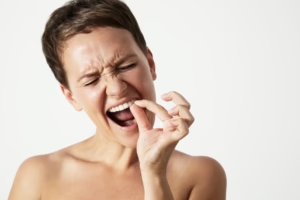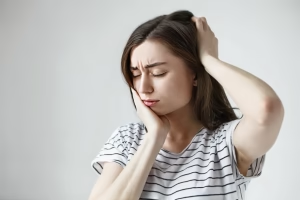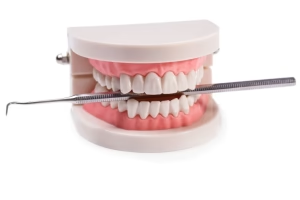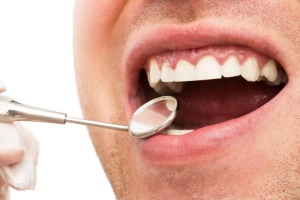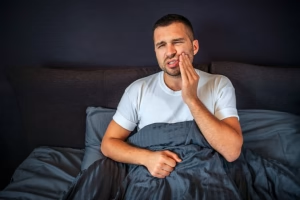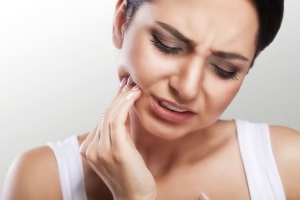Can TMJ Problems Cause Tinnitus?
30 May 2022 | Updated: 6 November 2025
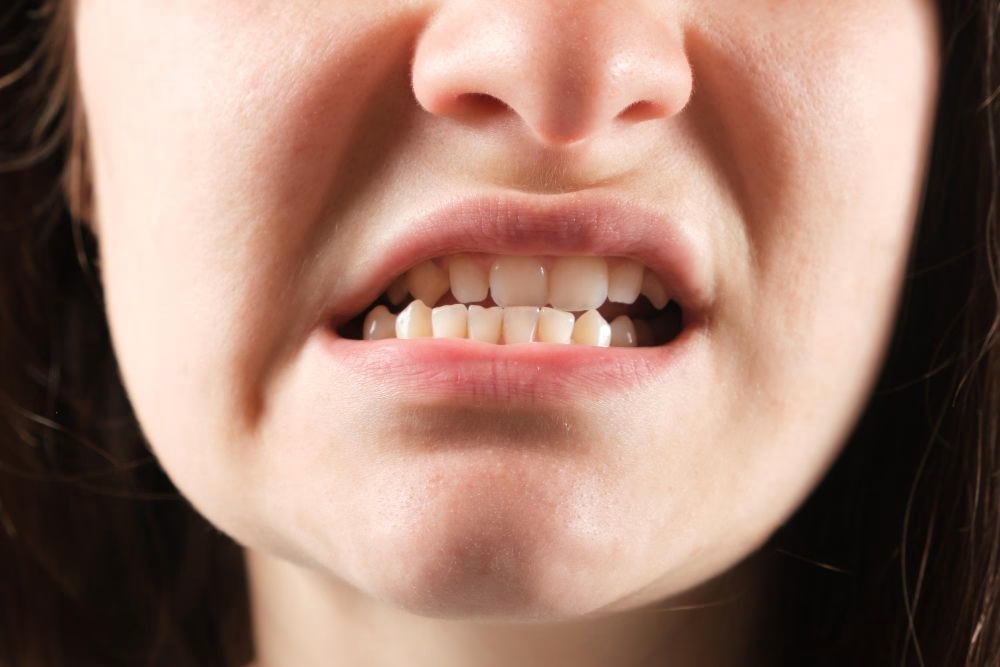
If you’ve ever noticed a ringing or buzzing sound in your ears with no clear cause, the source of the problem might actually be your jaw.
The temporomandibular joint (TMJ), the hinge connecting your jaw to your skull, is essential for everyday functions like chewing and speaking. When this joint becomes strained or misaligned, it can sometimes lead to tinnitus, a persistent ringing in the ears.
In this article, we’ll explore how TMJ disorders can contribute to tinnitus, the key symptoms to look out for, and the most effective treatment options available to relieve discomfort and restore balance.
What are TMJ Disorders?
Temporomandibular joint (TMJ) disorders affect the hinge that connects your lower jaw to your skull. This joint plays a key role in everyday actions like chewing, speaking, and yawning, and when it’s not functioning properly, it can lead to jaw pain, ear discomfort, or tinnitus.
Causes of TMJ Disorders
The temporomandibular joint combines a variety of sliding actions. Inflammation or irritation of the ligaments and muscles surrounding the joints can cause irregularities in the sliding actions which lead to TMJ disorders.
Pain from TMJ disorders is caused by the erosion of the small shock-absorbing disk which keeps the movement smooth, damage to the joint’s cartilage or physical injury of the joint. Potential causes for TMJ include:
But, in many cases, the cause of TMJ disorders is hard to diagnose.
Symptoms of TMJ Disorders
Signs of TMJ disorders may include:
- Pain or tenderness of your jaw
- Pain in one or both of the temporomandibular joints
- Aching pain in and around your ear
- Difficulty chewing or pain while chewing
- Aching facial pain
- Locking of the joint, making it difficult to open or close your mouth
- Clicking or popping sound in the jaw
- Headaches
How Are TMJ and Tinnitus Connected?

Tinnitus is often described as a persistent ringing, buzzing, or hissing sound in the ears. It can be caused by various factors, including hearing loss, exposure to loud noise, or blockages in the ear canal. While tinnitus is sometimes temporary, it can also become a chronic condition, and one potential cause that’s often overlooked is a TMJ disorder.
Because the temporomandibular joint sits so close to the inner ear, issues such as inflammation or irritation in the jaw can affect nearby structures like the cochlea – the part of the ear responsible for translating sound waves into signals the brain can interpret. When the TMJ becomes inflamed, it can disturb these delicate mechanisms, potentially leading to tinnitus.
TMJ tinnitus sounds like a high-pitched ringing sound, or even a clicking, buzzing, roaring or hissing sound. The sound may change as you open and close your jaw, which can be an indication that your TMJ disorder and tinnitus are linked.
Common accompanying symptoms include:
- Jaw pain or stiffness
- Headaches or facial discomfort
- Uneven tooth wear
- Neck or shoulder pain
Can Treating TMJ Disorder Improve Tinnitus Symptoms?
Somatic tinnitus refers to tinnitus that stems from musculoskeletal issues and tinnitus caused by TMJ disorders often falls into this category. Because the jaw joint and surrounding muscles are closely linked to the structures of the ear, treating the underlying TMJ problem can sometimes help relieve tinnitus symptoms.
According to the American Tinnitus Association, addressing TMJ dysfunction is recommended when tinnitus appears to be jaw-related. Gentle jaw and head exercises, along with sound or music therapy, have been shown to ease symptoms and improve comfort for many patients experiencing this type of tinnitus.
How to Tell the Difference between Tinnitus and TMJ?
People with arthritis or other joint conditions are often more susceptible to developing TMJ disorders. Persistent jaw pain, stiffness, or clicking when opening the mouth can be strong indicators of TMJ dysfunction.
If your tinnitus is linked to TMJ, treating the jaw issue will often help reduce or even eliminate the ringing or buzzing in your ears. This type of tinnitus is typically associated with stress, tension, and jaw-related pain or pressure.
Other common accompanying symptoms may include:
- dizziness
- headache
- vertigo
- neck pain
- poor quality of life
However, if you don’t experience ongoing jaw pain or discomfort, your tinnitus is less likely to be caused by TMJ and may stem from another underlying issue. In such cases, a professional dental and medical evaluation is essential to determine the exact cause and best course of treatment.
Can TMJ Treatment Cure Tinnitus?

With the right TMJ treatment, you can greatly improve your tinnitus symptoms and even cure tinnitus.
Treatments for TMJ disorders that will improve and/or cure tinnitus include:
- Medications, such as muscle relaxants and antidepressants
- A soft food diet
- Dental treatments, including bite realignment
- Mouth guards to prevent tooth grinding
- Oral splints to realign the eardrum
- Physical therapy to stretch and strengthen jaw muscles
- Corticosteroid injections into the joint
- Minimally invasive surgical procedures, such as arthrocentesis
- Arthrotomy (open joint surgery)
Expert TMJ and Tinnitus Care at MGA Dental
If you’re experiencing jaw pain, tension, or ringing in your ears, a professional dental assessment is the first step toward relief. A thorough check-up can help determine whether your tinnitus is linked to a TMJ disorder and identify the most effective treatment for your needs.
At MGA Dental Gold Coast and Brisbane, our experienced team provides comprehensive TMJ diagnosis and treatment, helping patients restore comfort, balance, and quality of life. Book your appointment at MGA Dental clinic and get expert care tailored to your smile.



